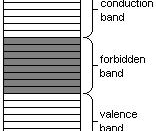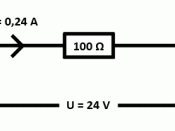Skill area P: Planning
What I am going to investigate is how the diameter of a wire affects the resistance of the wire.
I plan to change the diameter of the wire.
In order to keep it a fair test I will need to keep the following things the same:
-The same voltage of electricity entering the circuit (I used 6V)
-The length of the wire
-The temperature
-The type of wire
I have identified some hazards and I will deal with them as shown below:
Hazard 1: Electricity: What I will do is make sure that the voltage never gets dangerously high to make sure that a) nobody is electrocuted and b) so that the wire does not get too hot as is may change the results of the experiment or someone could burn themselves
When planning my investigation I will be making use of the following scientific knowledge:
Ohm's Law: An ohm is a unit used in the international system of measurements to measure resistance.
Ohm's law states that resistance is inversely proportional to the cross-sectional area of the wire. The symbol for an ohm is the Greek letter omega (?). By definition, an ohm is equal to one volt creating one ampere in a device, abbreviated as V/A. The equation to work out the resistance any circuit is V/I = R, where V is the voltage of a device, I is the current, and R is the resulting resistance. In order to calculate Resistance using Ohm's Law I will need to understand the following things:
Current: A measure of the flow of electrons, expressed in amperes (A).
Voltage: Electric potential or potential difference, expressed in volts (V). It is the push and pull of the potential difference between two points, which causes electrical current to flow...


